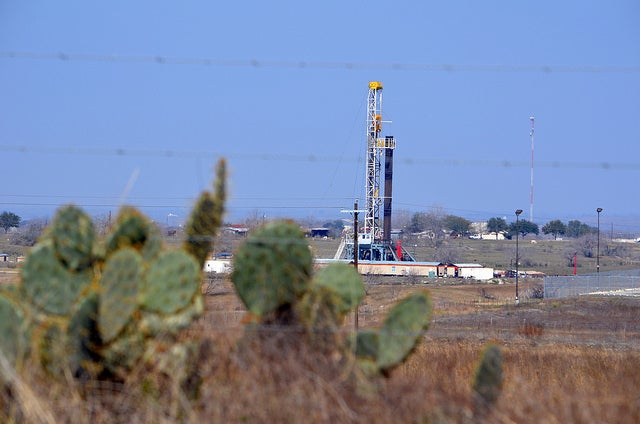 Aliso Canyon was a big methane release, especially in Los Angeles, but in the grand scheme of methane released every day by the nation’s oil and gas industry, it was a blip. And recent footage from Texas, coupled with a new study of over 8,000 oil and gas wells gives a glimpse at the kind of leaks that are happening outside of California’s borders – leaks that have huge implications for the state.
Aliso Canyon was a big methane release, especially in Los Angeles, but in the grand scheme of methane released every day by the nation’s oil and gas industry, it was a blip. And recent footage from Texas, coupled with a new study of over 8,000 oil and gas wells gives a glimpse at the kind of leaks that are happening outside of California’s borders – leaks that have huge implications for the state.
The Texas infrared footage shows a cloud of methane leaking from a pump jack in an oil field in Texas’ Permian Basin. While these smaller leaks may not be as egregious as the one at Aliso Canyon, they often go undetected and unaddressed, adding up to a large amount of pollution. And as these leaks happen in Texas – with little plans to stop them – the climate footprint of the gas supply system continues to increase.
So what does this have to do with California? California imports nearly 90 percent of its natural gas from regions across western North America, with a large portion coming from Texas production areas like the Permian and Anadarko basins. To put it another way: when it comes to the climate, what happens in Texas doesn’t stay in Texas. So even while progress is happening to cut oil and gas pollution in the Golden State, there is still a lot of work to be done to make sure imported gas isn’t responsible for significant climate damage before it gets here. Read More










 Over the past few months, hundreds of thousands of people across the U.S. have spoken out in support of action on one very important topic: methane.
Over the past few months, hundreds of thousands of people across the U.S. have spoken out in support of action on one very important topic: methane. No one ignores an opportunity to save billions of dollars. Numbers of that size are enough to make an audience take notice, even in a business like commercial real estate, where deals in the hundreds of millions and billions are commonplace.
No one ignores an opportunity to save billions of dollars. Numbers of that size are enough to make an audience take notice, even in a business like commercial real estate, where deals in the hundreds of millions and billions are commonplace. America got a rare unanimous decision from the Supreme Court this week in a case that has widespread implications for our electric grid, as well as the markets and regulations that govern and move it.
America got a rare unanimous decision from the Supreme Court this week in a case that has widespread implications for our electric grid, as well as the markets and regulations that govern and move it. Wait – Ohio utility regulators did what?
Wait – Ohio utility regulators did what? Localized power grids that have the ability to disconnect from the main, centralized grid – known as microgrids – have become one of the electricity industry’s latest darlings. Particularly after Hurricane Sandy knocked out electric generators and wires along the Northeast coast in 2012, urban and utility planners have been devising localized grids that can operate autonomously, strengthen the overall power system’s reliability and resilience, and protect critical infrastructure like hospitals, water treatment facilities, and police stations in the event of a grid-wide outage.
Localized power grids that have the ability to disconnect from the main, centralized grid – known as microgrids – have become one of the electricity industry’s latest darlings. Particularly after Hurricane Sandy knocked out electric generators and wires along the Northeast coast in 2012, urban and utility planners have been devising localized grids that can operate autonomously, strengthen the overall power system’s reliability and resilience, and protect critical infrastructure like hospitals, water treatment facilities, and police stations in the event of a grid-wide outage.